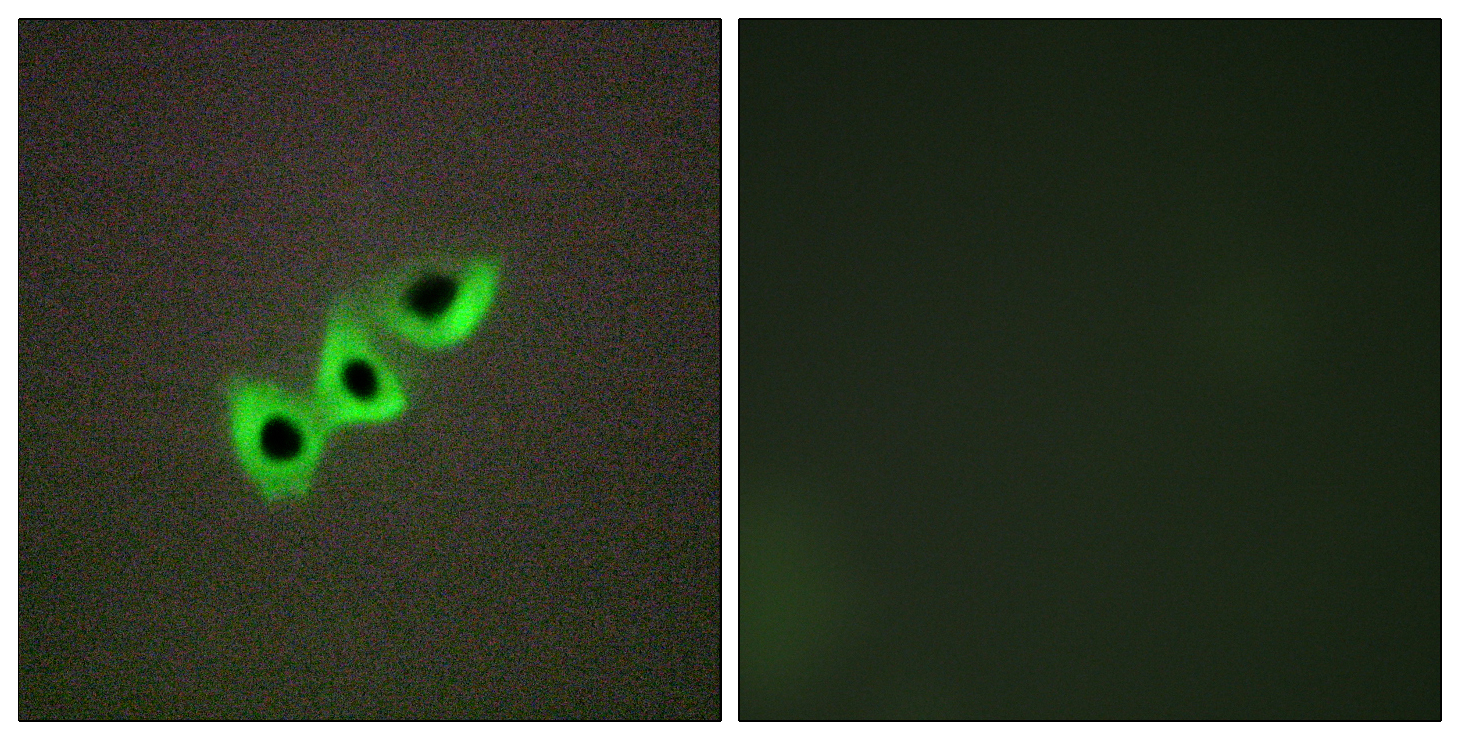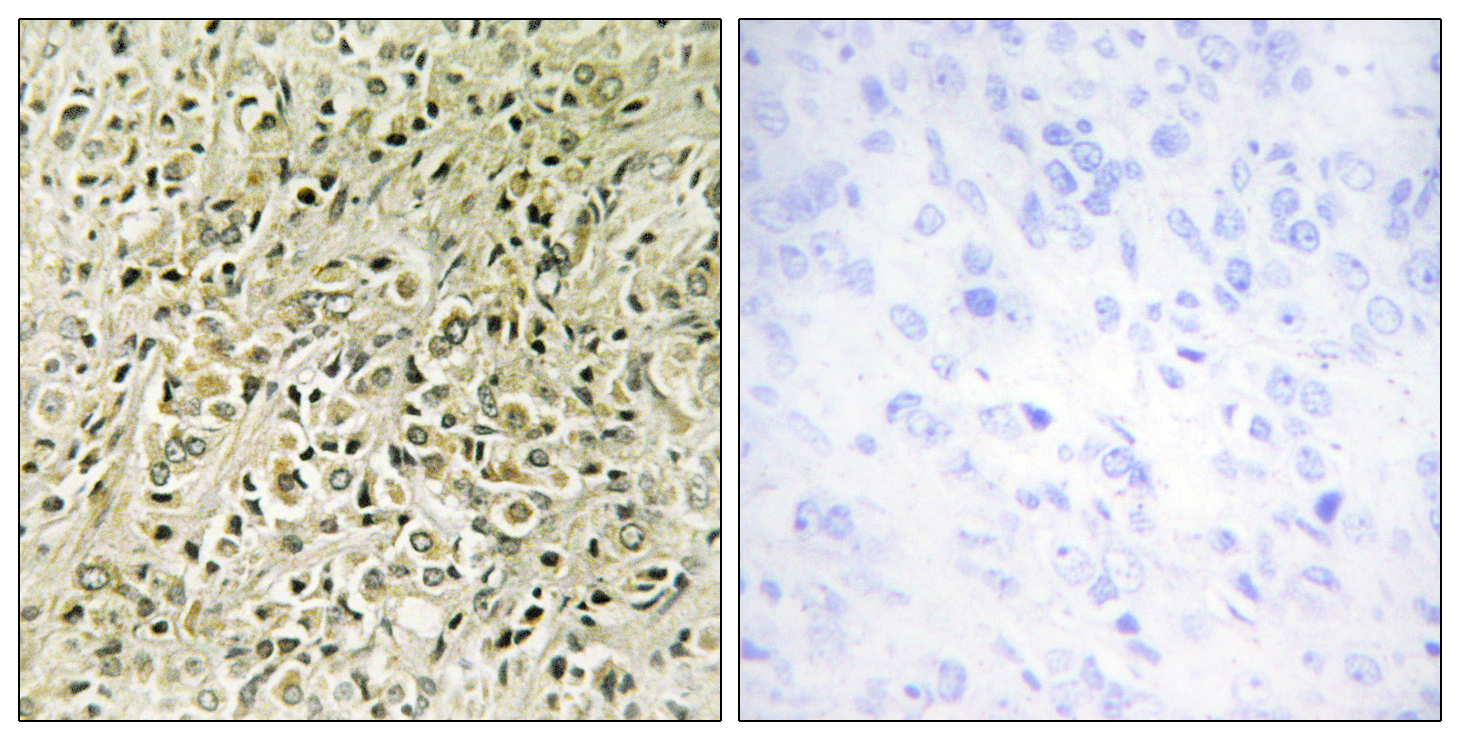DLC-1 Polyclonal Antibody
- Catalog No.:YT1356
- Applications:IHC;IF;ELISA
- Reactivity:Human;Mouse;Rat
- Target:
- DLC-1
- Gene Name:
- DLC1
- Protein Name:
- Rho GTPase-activating protein 7
- Human Gene Id:
- 10395
- Human Swiss Prot No:
- Q96QB1
- Mouse Gene Id:
- 50768
- Mouse Swiss Prot No:
- Q9R0Z9
- Rat Swiss Prot No:
- Q63744
- Immunogen:
- The antiserum was produced against synthesized peptide derived from human RHG07. AA range:61-110
- Specificity:
- DLC-1 Polyclonal Antibody detects endogenous levels of DLC-1 protein.
- Formulation:
- Liquid in PBS containing 50% glycerol, 0.5% BSA and 0.02% sodium azide.
- Source:
- Polyclonal, Rabbit,IgG
- Dilution:
- IHC 1:100 - 1:300. IF 1:200 - 1:1000. ELISA: 1:10000. Not yet tested in other applications.
- Purification:
- The antibody was affinity-purified from rabbit antiserum by affinity-chromatography using epitope-specific immunogen.
- Concentration:
- 1 mg/ml
- Storage Stability:
- -15°C to -25°C/1 year(Do not lower than -25°C)
- Other Name:
- DLC1;ARHGAP7;KIAA1723;STARD12;Rho GTPase-activating protein 7;Deleted in liver cancer 1 protein;DLC-1;HP protein;Rho-type GTPase-activating protein 7;START domain-containing protein 12;StARD12;StAR-related lipid transfer protein
- Molecular Weight(Da):
- 123kD
- Background:
- This gene encodes a GTPase-activating protein (GAP) that is a member of the rhoGAP family of proteins which play a role in the regulation of small GTP-binding proteins. GAP family proteins participate in signaling pathways that regulate cell processes involved in cytoskeletal changes. This gene functions as a tumor suppressor gene in a number of common cancers, including prostate, lung, colorectal, and breast cancers. Multiple transcript variants due to alternative promoters and alternative splicing have been found for this gene.[provided by RefSeq, Apr 2010],
- Function:
- function:Functions as a GTPase-activating protein specific for Rho and an activator of PLCD1 in vivo and induces morphological changes and detachment through cytoskeletal reorganization.,sequence caution:Chimera. Sequence from position 1 to 13 is due to a chimera.,similarity:Contains 1 Rho-GAP domain.,similarity:Contains 1 SAM (sterile alpha motif) domain.,similarity:Contains 1 START domain.,tissue specificity:Highest level of expression in the spleen, with rather lower levels in prostate, testis, ovary, small intestine and colon, but none in the thymus.,
- Subcellular Location:
- Cytoplasm. Cell junction, focal adhesion. Membrane; Peripheral membrane protein. Colocalizes with EF1A1 at actin-rich regions in the cell periphery.
- Expression:
- Highest level of expression in the spleen, with rather lower levels in prostate, testis, ovary, small intestine and colon, but none in the thymus.
- June 19-2018
- WESTERN IMMUNOBLOTTING PROTOCOL
- June 19-2018
- IMMUNOHISTOCHEMISTRY-PARAFFIN PROTOCOL
- June 19-2018
- IMMUNOFLUORESCENCE PROTOCOL
- September 08-2020
- FLOW-CYTOMEYRT-PROTOCOL
- May 20-2022
- Cell-Based ELISA│解您多样本WB检测之困扰
- July 13-2018
- CELL-BASED-ELISA-PROTOCOL-FOR-ACETYL-PROTEIN
- July 13-2018
- CELL-BASED-ELISA-PROTOCOL-FOR-PHOSPHO-PROTEIN
- July 13-2018
- Antibody-FAQs
- Products Images

- Immunofluorescence analysis of A549 cells, using RHG07 Antibody. The picture on the right is blocked with the synthesized peptide.

- Immunohistochemistry analysis of paraffin-embedded human prostate carcinoma tissue, using RHG07 Antibody. The picture on the right is blocked with the synthesized peptide.



